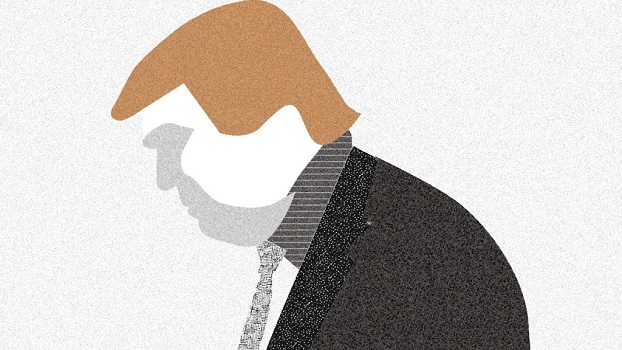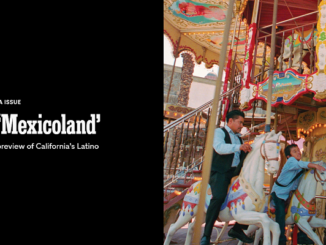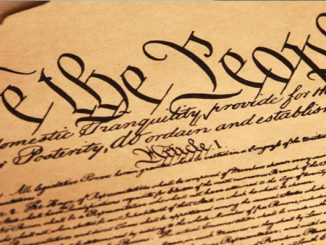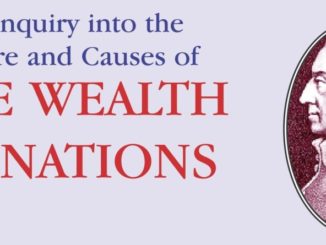
By Perry Bacon Jr.
In his first few months in office, President Trump may have backed off some of his more controversial campaign-trail positions on foreign policy and economic issues, but he has remained firm on his positions on civil rights and immigration policy. Attorney General Jeff Sessions and Homeland Security Secretary John Kelly in particular are aggressively implementing many of Trump’s proposals from 2015 and 2016, angering black, Latino and Muslim activists in particular.
It will be months, if not more than a year, before we have comprehensive data on exactly how Trump has changed immigration and civil rights law in the U.S.1 What we can say already, however, is that in its first 100 days, Trump’s administration has in some ways redefined who the U.S. government views as facing discrimination or marginalization.
The administration is not proposing less intervention from the federal government, which is the typical Republican approach, but rather it is seeking to wield federal power, just as Obama did. But whereas Obama’s policies focused on protecting African-Americans, Latinos, Muslims, people who are gay or transgender, and other groups that most Americans view as marginalized, Trump and his team are focusing on defending different groups: Christians, police officers, victims of crimes by undocumented immigrants, and people who fear Latino immigrants are taking their jobs or redefining U.S. culture, among others.
This approach is akin to civil rights for the Trump coalition, a shift in focus away from groups that Democrats (and the data) view as facing more discrimination and toward groups Republicans believe are more often marginalized. And Thursday could bring the latest example: Trump is expected to sign an executive order on “religious freedom” that will reportedly include provisions that make it easier for churches and other religious organizations to participate in politics while remaining exempt from federal taxes.

Here’s a look at the federal tools that Obama used, who he chose to protect and how Trump is using those same approaches to defend different groups:
Changing law-enforcement priorities
The Department of Justice, and law-enforcement agencies generally, have broad discretion in terms of what crimes to prioritize, what kinds of punishment to pursue and how they operate. Both Obama and Trump have used that authority — or, in Trump’s case, pledged to use that authority — to focus resources on the issues they and their voters care about most. And Trump, like Obama, is trying to push local law-enforcement agencies to emphasize those same priorities.
Obama sought to reform U.S. law enforcement by essentially making it more lenient toward undocumented immigrants and more friendly to people of color. By the end of the president’s second term, Obama’s Department of Homeland Security had shifted its approach to deportation, looking to remove only “convicted criminals, terrorism threats or those who recently crossed the border,” as the Washington Post described the shift.
In contrast, Trump is enforcing immigration law more aggressively. Under the new administration, DHS now has expanded authority to speed up the deportation process for some undocumented immigrants. Sessions wants prosecutors to seek felony charges, not lesser misdemeanor charges, for people accused of trying to enter the U.S. illegally a second time. He also wants prosecutors to, whenever possible, charge undocumented immigrants with aggravated identity theft, which carries a mandatory minimum sentence of at least two years of jail time.
Sessions, moreover, is asking each of the 94 U.S. attorney’s offices around the country to designate a “border security coordinator” who will be in charge of making sure immigration crimes are a priority and coordinating with DHS officials in those areas. He also plans to hire about 125 new judges who work almost exclusively on immigration cases. Kelly’s department, meanwhile, is looking to hire 15,000 more people to patrol the border and enforce immigration law.
And Trump’s administration is not just targeting undocumented immigrants themselves, but also cities that defend them. Trump wants to take away federal grant money from liberal areas if they continue to act as “sanctuaries” for undocumented people and don’t hand over undocumented immigrants to DHS for deportation. (A federal judge last week effectively barred the administration from implementing a broader reduction of federal funding for sanctuary cities without authorization from Congress.)
“San Francisco, and cities like it, are putting the well-being of criminal aliens before the safety of our citizens, and those city officials who authored these policies have the blood of dead Americans on their hands,” the White House said in a blistering statement last week.
On policing, Obama sought to balance the interests of people of color and the police, regularly praising officers but also highlighting the disparate treatment that members of minority groups receive in the American criminal justice system. Obama’s DOJ closely scrutinized how police departments treated people of color. And in the wake of controversial incidents in which police officers shot and killed young black people, Obama set up a task force to examine policing nationally and present him with ideas that might prevent such officer-involved killings in the future.
The new administration has taken a much more police-friendly approach. Sessions and Trump, in their three months in office, have praised law-enforcement officials in speech after speech after speech, and the attorney general has said that defending officers is one of his key goals.
“Most importantly,” Sessions said in a recent speech to border patrol personnel in Arizona, “I have directed that all 94 U.S. Attorneys Offices make the prosecution of assault on a federal law enforcement officer — that’s all of you — a top priority. If someone dares to assault one of our folks in the line of duty, they will do federal time for it.”
In political terms, Obama was shifting law-enforcement practices in ways that would particularly benefit African-Americans and Latinos, two blocs that largely backed him in 2008 and 2012. Trump is shifting practices to favor five other groups: legal U.S. residents who might be the victims of violent attacks by undocumented immigrants; legal residents who might lose out on jobs or face lowered wages due to competition from undocumented immigrants; Americans who believe that allowing undocumented people to come and stay is a sign of disorder; police officers; and border-enforcement personnel. Trump, of course, won overwhelming support among voters concerned about illegal immigration in both the 2016 primaries and the general election, and he was endorsed by the Fraternal Order of Police and by unions that include members of the Border Patrol and Immigration and Customs Enforcement service.
Softening policy toward drug users
Obama’s Justice Department urged its prosecutors not to seek mandatory minimum sentences for drug crimes. As states in the West legalized marijuana, Obama officials didn’t protest much. The president himself signed a law reducing sentences for crack cocaine use. African-Americans tend to be arrested for drug use at disproportionately high rates and serve longer jail sentences for drug trafficking than whites do.
In contrast, Sessions named Steve Cook as one of his top advisers. Amid a bipartisan push for criminal justice reform in the last few years, Cook, a federal prosecutor in Tennessee, has strongly defended mandatory minimum sentences for drug crimes, arguing that they are a critical tool for stopping drug trafficking.
But the Trump administration, despite its generally get-tough posture, does have a soft spot for one group that has technically violated the law: those addicted to opioids. At the launch of the president’s task force on opioid abuse in March, New Jersey Gov. Chris Christie, who is leading the task force, likened drug addiction to cancer, heart disease and diabetes, saying addiction is a disease that people should not be ashamed to talk about. According to data from the Centers for Disease Control, the states facing the highest rates of death from drug overdoses are West Virginia, New Hampshire, Kentucky and Ohio. Three of those states — Kentucky, New Hampshire and West Virginia — have smaller black and Latino populations than the national average. The opioid problem has hit heavily white areas of America, and some experts say that explains why it has not led to the type of tough-on-crime policies that came amid the crack epidemic in black areas in the 1980s and 1990s.
Obama had an opioid task force too, so this is not an issue where Trump is helping a group that was previously ignored. But Obama’s whole administration was pushing toward a more lenient approach to drug use, while Trump created this task force even as his attorney general has sharply criticized the growing use of marijuana.
In political terms, Obama was finding a way to reduce the degree to which drug enforcement adversely affected black people, and Trump seems to be doing the same for rural white people.
Changing education policies
Presidents of both parties have described education as a “civil rights issue” and in the past have used school policy as a way to make changes on issues involving race, gender and identity. The Obama administration particularly tried to help two groups: young women in college and black and Latino students facing suspension from school.
In 2014, the Obama administration’s Department of Education threatened to cut federal funding from more than four dozen colleges and universities that were under investigation at the time for potentially violating federal anti-discrimination laws in the way they handled sexual assault claims.
It doesn’t appear that any of these schools ever actually lost federal funding as a result of these investigations. But the threat allowed the administration to demonstrate how serious it was about fighting sexual assaults on campus, and after being named to the list, some of these colleges announced changes to the way they defined and investigated sexual assault. The Obama administration kept a public, regularly updated list of schools under federal scrutiny.
The Obama administration also pushed schools to use alternatives to expelling or suspending students, since those punishments tend to disproportionately affect black and Latino students. Some school districts, such as Minneapolis, adopted policies like banning the suspension of pre-kindergarten students after Obama’s team drew national attention to the issue.
Trump is setting up his education policy to benefit a different group: conservative Christians.
Trump and his education secretary, Betsy Devos, are pumping up the value of voucher-style programs that make it easier for low-income students to attend private schools, which they say will help black and Latino students in particular. The administration eventually wants to create a national school-choice program.
Studies on voucher programs have not backed up the administration’s enthusiastic claims about the programs’ benefits, finding instead that students who use school vouchers learn about as much as or less than those enrolled in traditional public schools. But one clear beneficiary will be Christian private schools, which draw in the vast majority of students who attend private schools through voucher programs in many states.
Conservative Christian activists were also the group perhaps most satisfied by one of Trump’s first big education-policy moves: rolling back an Obama-era initiative requiring schools to allow students to use the bathroom of the gender they identify with.
Setting a tone
It will take time for the full impact of Trump’s policies to become clear. But presidents exert influence not just through formal policy changes but also through the choices they make in supporting or condemning various causes. Obama defended the phrase “Black Lives Matter,” invited key BLM activists to the White House and publicly praised Ta-Nehisi Coates, the Atlantic magazine writer who has argued that black Americans should get reparations for slavery and other discriminatory practices. He called NBA player Jason Collins and congratulated him after Collins publicly announced that he is gay. He criticized Republican proposals to stop refugees and visitors from majority-Muslim nations from entering the U.S.
Trump is emphasizing different issues. After news broke that Bill O’Reilly had been accused of sexual harassment, the president defended the Fox News host, who was forced out of his job two weeks later. Trump and his top aides regularly refer to “Islamic terrorism,” linking religion with actions in a way that the last two administrations avoided. Top administration aides have suggested that refugees who come to the U.S. from Muslim nations like Iraq are a security threat to Americans already here.
It’s important not to draw a false equivalence here. On many civil rights issues, the Obama administration was pushing an agenda supported by data, which shows that black Americans are disproportionately killed by police, American schools are increasingly segregated by race and class, and African-Americans and Latinos are less likely to possess the identification documents that some voter laws require. In justifying their policies, Sessions and the president have falsely suggested that there is a huge increase in crime in American cities and that undocumented immigrants are a major source of that crime.2
What we don’t yet know is whether the administration will actually follow through on all these ideas. Trump, for example, has already backed away from his campaign promise to end DACA, the Obama-era program that limited deportations of young people who were brought to the United States as children. And even where Trump remains committed to his goals, he has encountered obstacles: Congress is so far refusing to fund the border wall that Trump campaigned on, while courts have blocked his executive order preventing people from certain majority-Muslim nations from entering the country.
But the early indications are clear. Trump campaigned on a kind of white identity politics, highlighting black crime, Latino immigration and Islamic terrorism as defining issues for the nation. This was not just a break from Obama’s approach, but also a shift from the last Republican president. George W. Bush visited a mosque, said “Islam is peace” in a speech, pushed immigration reform that would grant citizenship to certain undocumented immigrants, signed a renewal of the Voting Rights Act, and put two African-Americans (Colin Powell and Condoleezza Rice) in powerful roles in his administration from its earliest days.
From his appointments to his rhetoric to his early policy moves, Trump has set the stage to demonstrate what a presidency grounded in this kind of identity politics will do. And unlike his shifting stances on Chinese currency and NATO, there’s little sign of a major pivot.
Perry Bacon Jr. is a senior writer for FiveThirtyEight. @perrybaconjr



